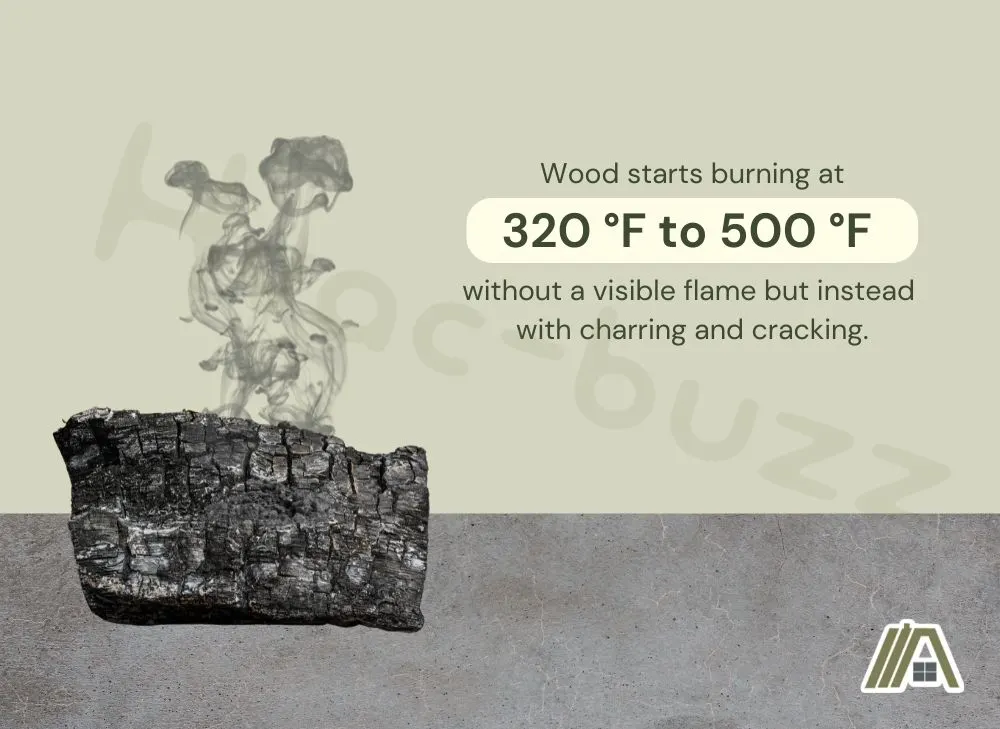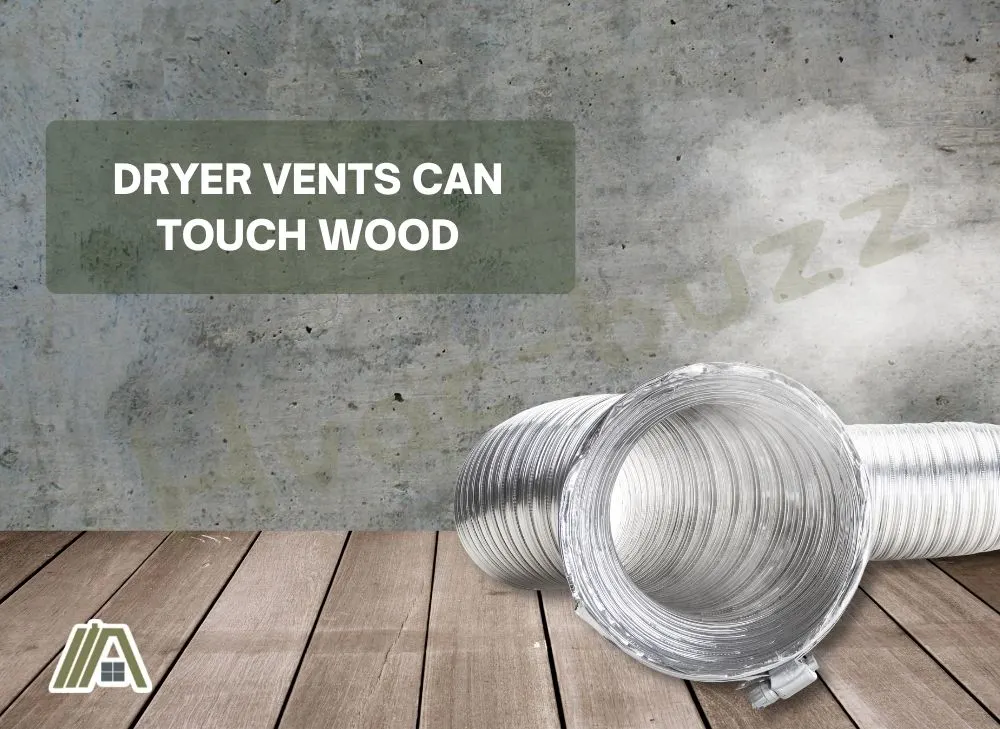Fire risks are not something to take lightly, especially when it comes to appliances that generate heat, such as dryers and their vents. There has to be a safe way to install them, or else they would not be permitted in homes, but sometimes it’s hard to keep track of all the rules about the installation.
If you are trying to figure out the best way to arrange your dryer vents, and you are unsure if it is safe for them to be in contact with wood in your house, this article should put your worries to rest.

Wood used in house framing ignites at temperatures of around 800 °F or higher. Dryer vent surfaces only reach around 130 °F. As such, it is highly unlikely that contact between wood and dryer vents/ducts will cause any issues. It is not prohibited in the IRC.
How Hot Do Dryer Vents Get?
Dryer vents can reach a range of temperatures, depending on various factors.
One of these factors is the size and dampness of the load in the dryer, where bigger and damper loads produce a greater heat sink, such that hot air is cooled as the moisture is evaporated.
Secondly, warmer room temperatures will result in higher vent temperatures.
Thirdly, restrictions to airflow, such as when lint builds up and traps heat, can also result in higher vent temperatures.
Temperatures will also vary according to where measurements are taken along the vent.
- Air temperatures in the vent at the dryer typically range from 125 °F to 135 °F.
- The surface temperature of the dryer vent at the interior surface of the exterior wall can range from 113 °F to 130 °F.
- Finally, the interior surface temperature of the dryer vent at the exterior wall vent outlet can range from 100 °F to 145 °F.
If any section of the dryer vent exceeds 392 °F, it is considered highly abnormal and unsafe.
However, there are usually temperature control systems pre-installed in electric dryers near the exhaust vent and heating element that prevent overheating, depending on air temperature.
Heat Required to Ignite Wood
The temperature required to ignite wood is dependent on the type of wood, including its density, structure, and resin quality, as well as environmental conditions.
Generally, wood starts burning at 320 °F to 500 °F without a visible flame but instead with charring and cracking.

At temperatures above 390 °F on average, the wood may catch fire.
More specifically, wood from porous trees burns intensely, while denser woods require higher burning temperatures.
As examples of a few wood types commonly used in home construction, pine ignites properly at 800 °F, while oak ignites at 900 °F.
These values are far lower than the normal average surface temperature of dryer vents.
Is House Framing Fire- or Heat-Resistant?
The use of fire-retardant materials has become popular and is often necessary to satisfy building safety requirements.
Fire-retardant wood is treated with fire-retardant chemicals (such as boric acid or fire-resistant paint) using a high-pressure system to ensure that it is completely infused with the chemicals.
These chemicals ensure that the time it will take for wood to ignite is prolonged and that it is more heat-resistant.
While fire-retardant materials may not be required to be used in some parts of a building, house framing is required to consist of fire-retardant materials to satisfy safety requirements.
Aside from fire-resistant wood, frames constructed from materials such as steel and concrete are naturally fire- and heat-resistant.
Dryer Vents Can Touch Wood
There is not likely to be an issue with contact between dryer vents and wood in your home.
This is because dryer vents are unlikely to reach a temperature that is high enough to cause wood to ignite, especially if the dryer vents are well maintained.

Additionally, house framing should consist of fire-resistant materials that are either naturally resistant to heat or are treated with appropriate chemicals to make it so.
Hence, as long as you maintain dryer vents, ensuring that there is not a buildup of lint, it should be safe to have dryer vents and wood in contact.
The Code Doesn’t Prohibit Contact
The regulations for venting dryers are listed in Section M1502 of the International Residential Code (IRC).
In this section, there is no mention of preventing contact between wood and dryer ducts and vents, so this is not expressly prohibited.
Possible Exception
According to Section M1502.1 of the code, dryers should be vented according to the manufacturer’s instructions.
Hence, if the manufacturer states that contact between wood and the dryer vents should be avoided, you are compelled to comply in order to satisfy the code requirement.
Source
https://inspectapedia.com/Appliances/Clothes-Dryer-Temperatures.php
https://inspectapedia.com/Appliances/Clothes-Dryer-Safety-Bonaccorso-CPSC_2012.pdf
https://www.yourownarchitect.com/19-types-of-wood-used-in-home-construction/
https://fireproofdepot.com/what-temperature-does-wood-ignite/
https://www.tayloredge.com/reference/Science/ignition.html
https://www.clp-inc.com/complete-guide-fire-retardant-wood/
https://btnmarketing.com/chapter-13-fire-resistive-structural-requirements/

Rudy Bies
Saturday 23rd of March 2024
Can the dryer vent touch the insulated power cable to the dryer ?